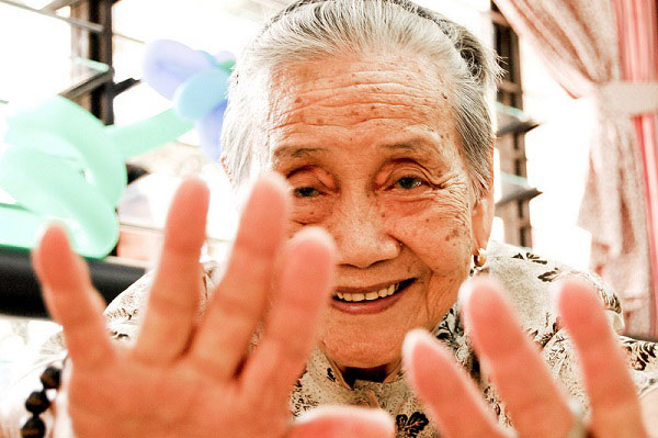By |
Updated 8/17/17 2:00pm | Senior safety is our main goal at Alert1. From fall prevention to member satisfaction, Alert1 aims to provide the best possible service. We help seniors continue to live their lives with peace of mind thanks to our medical alert systems.
But many seniors are not able to live in safety. Some do not have extra peace of mind. Many seniors live in suffering and fear, though they may not know it. Sadly, elder abuse is an all too common occurrence that targets aging seniors.
For our part, Alert1 is committed to fighting against elder abuse. It is important to stand against such mistreatment of our elders. For this reason, Alert1 supports World Elder Abuse Awareness Day.
What is World Elder Abuse Awareness Day?

World Elder Abuse Awareness Day (WEAAD) is an international day that aims to create better understanding of senior abuse, neglect and exploitation. Senior-friendly cities, towns, and provinces throughout the world organize events with this goal in mind.
The World Health Organization and the International Network for the Prevention of Elder Abuse launched WEADD in June 15, 2006. Elder abuse is a human rights issue acknowledged by the United Nations International Plan of Action. WEADD functions to emphasize the need for action against such an important issue.
What is Considered Elder Abuse?

Elder abuse is negligent, intentional or unintentional behavior that harms an older adult. Caregivers and friends can be senior allies in the fight against elder abuse. Before you can take action, arm yourself with the right facts on what is considered elder abuse. Familiarize yourself with the shocking statistics below:
- Abuse can be emotional, physical, psychological, or financial in the form of exploitation.
- 1 in 10 older adults face abuse.
- 1 in 2 older adults with dementia or Alzheimer’s face abuse.
Because elder abuse is still prevalent in society, it is important to be able to spot the warning signs.
What Are Signs of Elder Abuse?

Early indicators of neglect include a lack of food, medication, or proper hygiene.
As outlined above, elder abuse can be physical, psychological, or financial in form.
- Physical. Indicators of physical abuse include unexplained burns, cuts or bruises on senior’s bodies. Loss of access to proper food, medication, and hygiene are considered physical abuse as well.
- Psychological. Identifying this form of abuse requires careful observation of the senior’s behavior. Are they withdrawn? Does the caregiver isolate the elder? How does the caregiver communicate or act toward the elder?
- Financial. Financial abuse or exploitation is destructive and can result in a senior lacking the proper funds for basic needs. Monitor caregivers who have control of a senior’s finances, and watch out for seniors signing documents they do not understand.
How to Get Involved in World Elder Abuse Awareness Day

With the proper knowledge in hand, you will be prepared take part in WEADD. Use the resources at your disposal to find out how you can help raise awareness.
- Volunteer. Look up your local Area Agency on Aging or Senior Center. Find events where you can offer your time. Give them a call and learn about ways you can be of further help.
- Organize. Work with your faith community, sports club or anything in between. Develop an outreach plan with a goal in mind. Will you make posters and distribute them to community centers, libraries and cafes? Will you hold a candlelight vigil? Get creative. You are stronger in numbers.
- Attend. Go to an event, fair or panel discussion. Engage with thought leaders and help to create a discussion about elder abuse. Discussions can help generate solutions to combatting maltreatment and exploitation in your local community.
- Be heard. Seniors on social media can be your tool to raise awareness. Use Twitter and Facebook to have all your friends retweet or share your posts about elder abuse awareness. Include a call to action. You can like the National Center on Elder Abuse Facebook page to see their posts and use the hashtag #WEAAD2014.
- Wear the purple ribbon. For the day, pin the purple ribbon on your person. You will inevitably get questions about your ribbon. Use this opportunity to help others understand the issues seniors face.
Remember, the goal is raising awareness. An estimated 5 million seniors in the U.S. are victims of abuse each year. Help bring these numbers down by helping others understand the issue. We need to take action and prevent elder abuse.
How to Prevent Elder Abuse

There is no one answer to preventing elder abuse. Here are a few things you can do:
- Visit assisted living facilities and volunteer to be a friendly visitor.
- Call or visit your own elderly loved ones.
- Watch out for signs of elder abuse.
- Contact the proper officials if you notice something out of the ordinary.
Use World Elder Abuse Awareness Day to help others understand senior abuse. Join Alert1 in making senior safety a priority. Give us a call for more information on how our medical alert systems keep seniors safe.
You may enjoy these similar articles:

